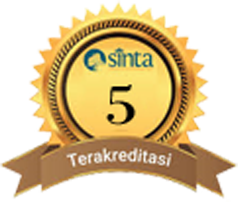PEMANFAATAN MEDIA POP UP BOOK UNTUK MENINGKATKAN KETUNTASAN BELAJAR SISWA PADA PEMBELAJARAN PKN DI KELAS V MIS LAMGUGOB
DOI:
https://doi.org/10.22373/fitrah.v3i1.1265Keywords:
Pop Up Book Media, Complete Learning.Abstract
This research is motivated by the low mastery of student learning in Civics learning, especially in class V MIS Lamgugob. Based on the KKM in MIS Lambugob it is 80 while the average student only reaches 65%. Furthermore, the problem from the background is not achieving the student's KKM because students do not pay close attention when the teacher explains the material. This can be seen when in the learning process many students are busy playing alone or disturbing their next door friends, students are not interested in participating in learning, thus making students less understanding and bored in learning and not leaving a meaningful experience. This research includes classroom action research (CAR), which in CAR research there are 4 stages, namely planning, implementation, observation, reflection. In collecting data, researchers used teacher activity sheets, student activity sheets and test questions. This research was conducted in 2 cycles. In cycle 1, the teacher activity observation sheet, the percentage value in cycle 1, which is 80% is in the good category, while in the second cycle the percentage value is 97% in the very good category. In the student activity observation sheet in the first cycle the percentage value of 77.5% is in the good category in the second cycle the percentage value is 92.6%. The students who achieved mastery learning in the first cycle were 16 people and those who did not achieve learning mastery were 14 people, in the second cycle 25 students who achieved mastery learning and 5 who did not achieve learning completeness and the value of classical student learning outcomes in the first cycle reached 53.33 % and cycle II 83.33% classically have reached completeness. The conclusion is that the use of pop up book media can increase the completeness of student learning outcomes.
Downloads
Published
How to Cite
Issue
Section
License
Authors who publish in this journal agree to the following terms:
- Authors retain copyright and grant the journal right of first publication with the work simultaneously licensed Attribution-NonCommercial-ShareAlike 4.0 International (CC BY-NC-SA 4.0) that allows others to share the work with an acknowledgment of the work's authorship and initial publication in this journal.
- Authors can enter into separate, additional contractual arrangements for the non-exclusive distribution of the journal's published version of the work (e.g., post it to an institutional repository or publish it in a book), with an acknowledgment of its initial publication in this journal.
- Authors are permitted and encouraged to post their work online (e.g., in institutional repositories or on their website) before and during the submission process, as it can lead to productive exchanges and earlier and greater citation of published work. (See The Effect of Open Acces)









